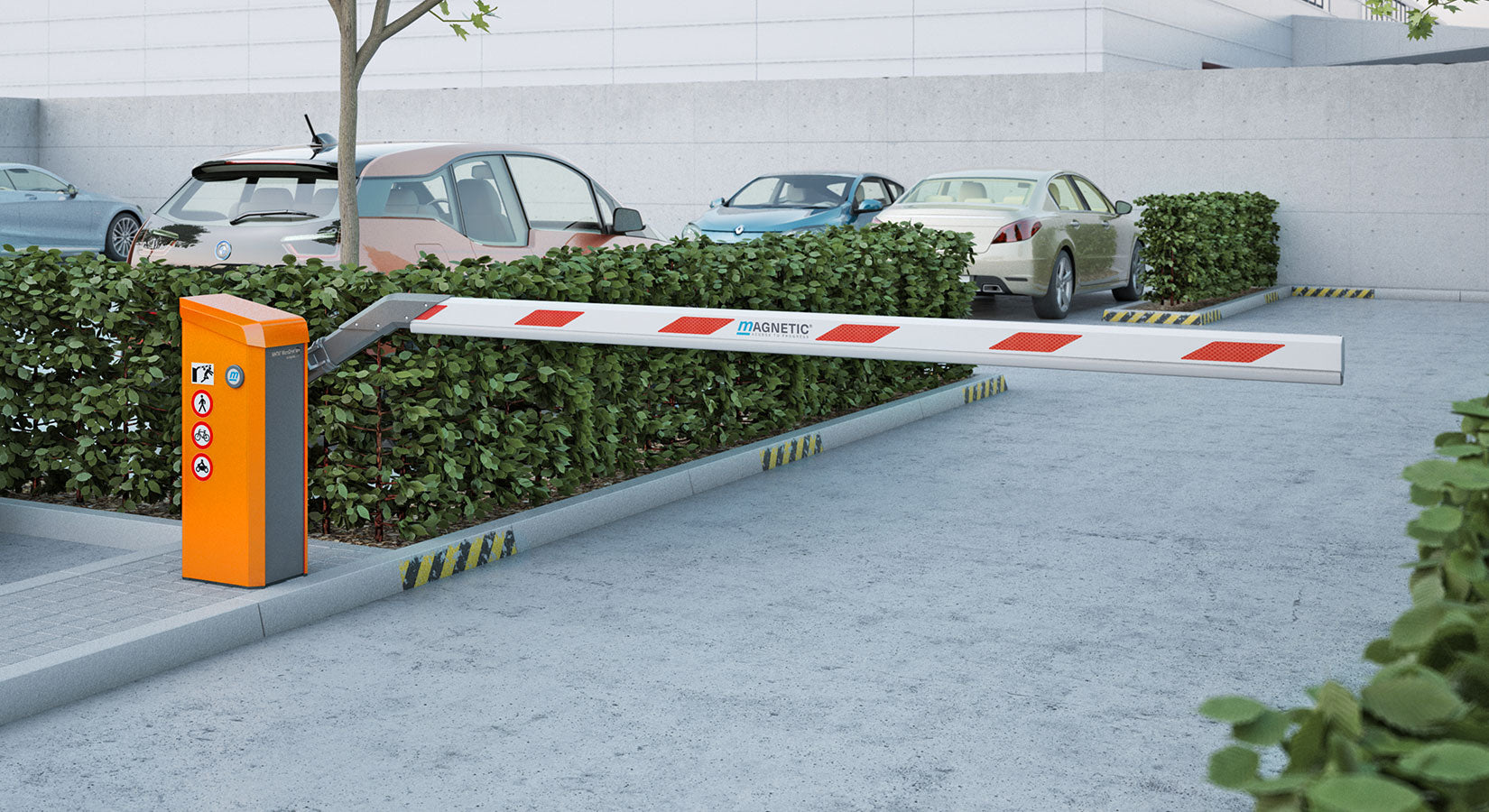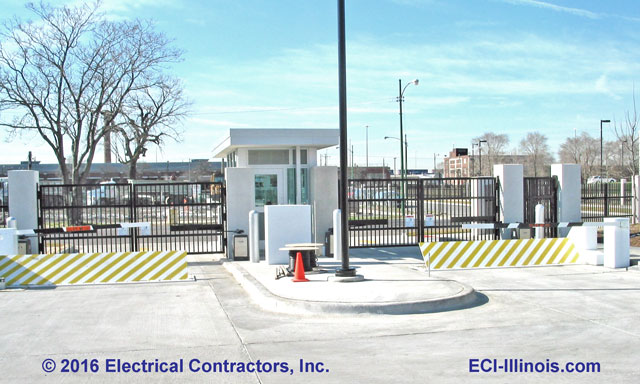About Wedge Barriers
Wiki Article
7 Easy Facts About Wedge Barriers Shown
Table of ContentsSome Of Wedge BarriersSome Of Wedge Barriers

14 and the surface area 12 to which the obstacle 10 is secured might be made from concrete - Wedge Barriers. 2, the obstacle 10 is mounted to or consists of an anchor or subframe (e. g., support 30 received FIG. 2 )secured beneath the surface area 12. As an example, the bather 10 might be bolted to the support or secured to the anchor by other mechanical fasteners. In the illustrated personification, the obstacle 10 consists of a wedge plate 16, that includes a section that is substantially parallel with the surface 12 when the barrier 10 is in the pulled back placement. To put it simply, vehicles or people may overlook the barrier 10 when the obstacle 10 is in the pulled back position and experience slight altitude loved one to the surface area 12 while on the obstacle 10. As talked about in detail listed below, when the obstacle 10 remains in the deployed position, the wedge plate 16 is held and supported in a raised placement by a lifting device of the barrier 10. In addition, the components 18 may be bolted or otherwise mechanically paired to each other. In this manner, repair or substitute of several components 18 may be simplified and streamlined. That is, repair or substitute of solitary parts 18 might be done quicker, conveniently, and expense effectively. FIG. In certain personifications, the anchor 30 may be a steel frame including plates, beam of lights(e. g., I-beams ), and/or other structures that are safeguarded within the structure 14, which might be concrete. At the surface area 12, a top side 28 of the support 30 might go to least partially subjected , therefore allowing the add-on of the barrier 10 to the anchor 30. g., threaded openings)in several light beams or plates of the support 30 might be subjected to the surface area 12. In this way, screws 32 or various other mechanical bolts might be used to safeguard the obstacle 10 to the anchor 30. As the obstacle 10 is installed to the surface 12 of the structure 14, collection of debris and other product under the barrier may be reduced, and parts of the bather 10 may not be revealed to below quality settings. As shown by reference character 52, the training system 50 consists of parts disposed below the wedge plate 16. The parts 52 under the wedge plate 16 may consist of an electromechanical actuator, a camera, one or more web cam surface areas, and so forth. In addition, the lifting mechanism 50 consists of a springtime setting up 54
The springtime pole 58 is coupled to a camera(e. g., cam 80 revealed in FIG. 4) of the training device 50. The springs 60 disposed regarding the springtime pole 58 are kept in compression by spring supports 62, including a fixed spring assistance 64. That is, the set spring assistance 64 is fixed loved one to the structure 14 et cetera of the bather 10.
The Wedge Barriers PDFs
The remaining force applied to the cam camera deploy release wedge plate 16 may be provided given you could try this out an electromechanical actuator 84 or other various other. The springtime assembly 54 and the actuator 84(e. Wedge Barriers. g., electromechanical actuator)might operate together to translate the web cam and raise the wedge plate 16.
As stated above, the springtime assembly 54 applies a constant force on the webcam, while the electromechanical actuator might be managed to put in a variable pressure on the camera, consequently allowing the training and decreasing( i. e., deploying and withdrawing )of the wedge plate 16. In particular embodiments, the continuous pressure applied by the springtime assembly 54 might be flexible. g., electromechanical actuator) is disabled. As will be appreciated, the springtime setting up 54 might be covered and protected from particles or various other components by a cover plate(e. g., cover plate 68 shown in FIG. 4) that might be considerably flush with the raised surface 38 of the foundation 14. As mentioned above, in the released placement, the wedge plate 16 offers to block access or traveling past the obstacle 10. For instance, the barrier 10(e. g., the wedge plate 16 )may obstruct pedestrians or lorries from accessing a building or path. As discussed over, the obstacle 10 is connected to the support 30 safeguarded within the structure 14,

front braces 71. As an outcome, the affiliation assemblies 72 may pivot and revolve to make it possible for the collapse and extension of the linkage settings up 72 during retraction and implementation of the bather 10. The link assemblies 72 reason activity of the wedge plate 16 to be restricted. If a vehicle is traveling in the direction of the deployed wedge plate 16(e. For instance, in one condition, the security legs 86 might be prolonged duringmaintenance of the barrier 10. When the safety and security legs 86 are deployed, the security legs 86 support the weight of the wedge plate 16 against the surface 12. Because of this, the training system 50 might be shut off, serviced, eliminated, replaced, etc. FIG. 5 is partial perspective sight of a personification of the surface-mounted wedge-style obstacle 10, illustrating the web cam 80 and the web cam surfaces 82 of the training system 50. Particularly, two web cam surfaces 82, which are described as reduced web home cam surface areas 83, are placed listed below the web cam 80. The lower cam surface areas 83 might be repaired to the surface 12 (e. For instance, the lower camera surfaces 83 and the placing plate 85 may form a solitary item that is protected to the anchor 30 by screws or various other mechanical fasteners. Furthermore, two web cam surfaces 82, which are referred to as upper camera surfaces 87, are placed over the camera 80 and paired to (e. In other personifications, intervening layers or plates might be positioned in between the surface 12 and the lower webcam surface areas 83 and/or the wedge plate 16 and the upper cam surfaces 87 As mentioned over, the web cam 80 translates along the web cam surfaces 82 when the wedge plate 16 is lifted from the pulled back position to the released position. In addition, as pointed out over, the springtime setting up 54 (see FIG. 3 )may offer a force acting upon the webcam 80 in the direction 102 through spring rod 58, which may lower the force the electromechanical actuator 84 is required to use to the webcam 80 in about his order to actuate and raise the wedge plate 16. 1 )to the released position(see FIG. 4). As shown, the cam 80 consists of track wheels 104(e. g., rollers), which get in touch with and equate along the web cam surfaces 82 throughout procedure.
Report this wiki page